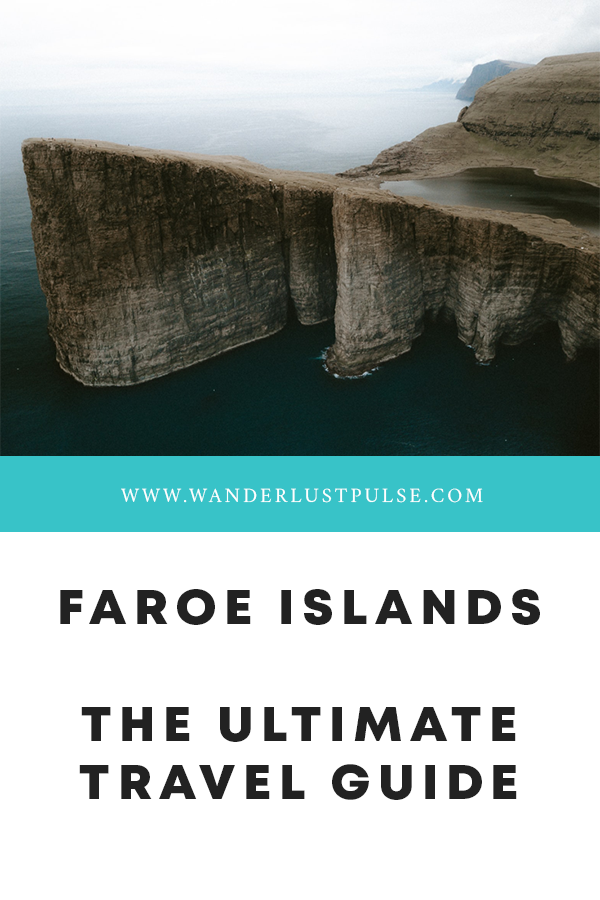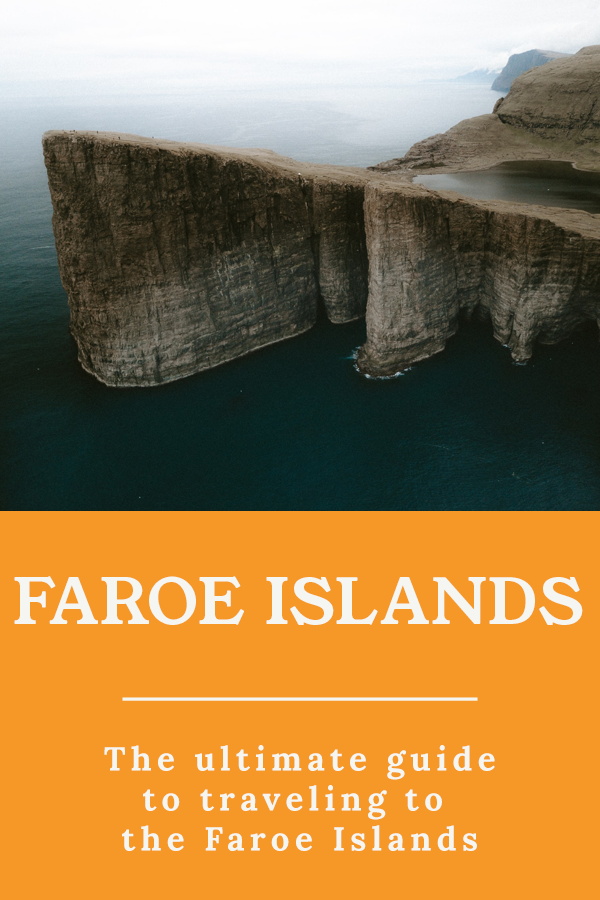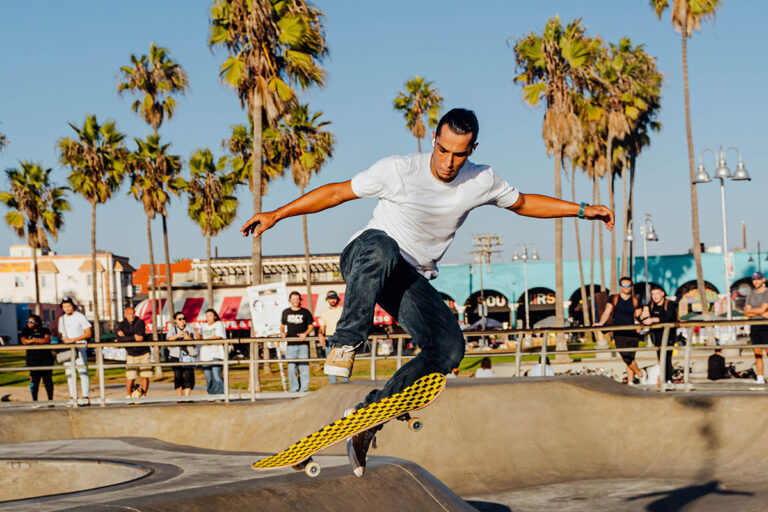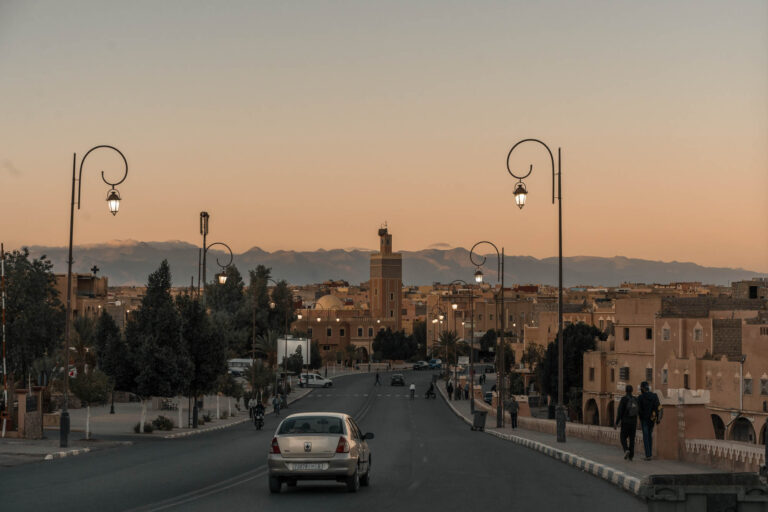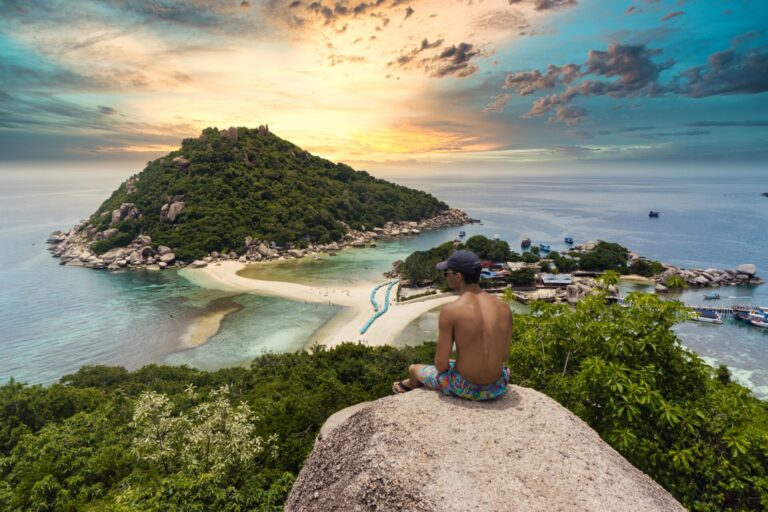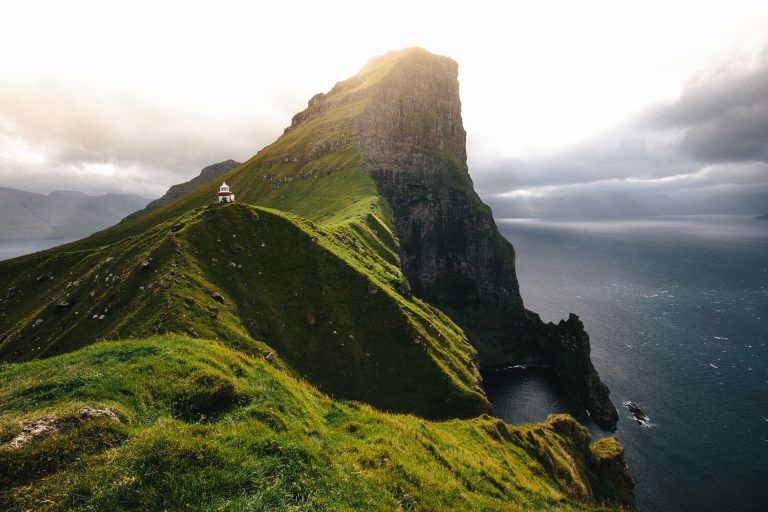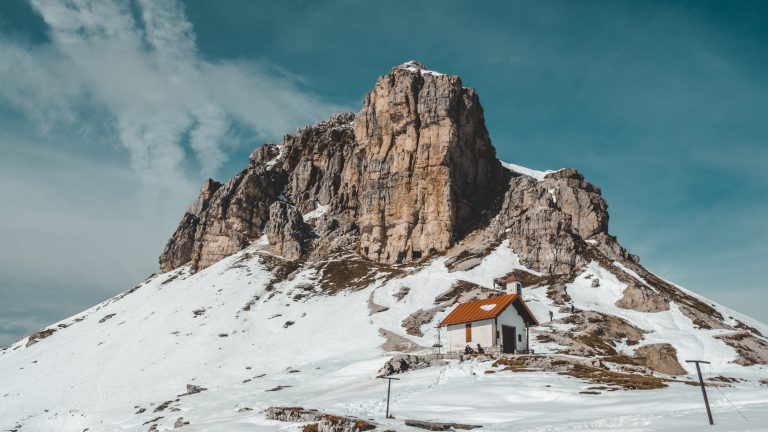The ultimate guide to traveling to the Faroe Islands
Never heard of the Faroe Islands before? You’re not alone; most Europeans don’t even realize it exists!
While a search on google maps will show you that the Faroe Islands is a group of islands located in the North Atlantic Ocean between Norway and Iceland, a search on Instagram will teach you about the jaw-dropping beauty of the islands.
Although the Faroe Islands are relatively small in size, they have a rich history with some unusual habits. This blog will introduce you to the Faroe Islands, and prepare for an unforgettable journey into this ancient Viking country!
Page Contents
The history of the Settlement of the Faroe Islands
The first inhabitants of the Faroe Islands were Irish monks, who lived on the islands as a very small group of settlers. A few hundreds years later, the Vikings colonized the islands which considerably increased the population until half of the inhabitants perished in the Black Death.
With the colonization from the vikings, the Faroese archipelago was a part of the Kingdom of Norway from between 1035 to 1814. This had a massive impact on the Faroese culture, the Faroese language for example is a mix of the extinct Old Norse and Icelandic.
During the Napoleonic Wars, both Denmark-Norway and the Kingdom of Sweden tried to maintain a neutral position but soon became involved in the fighting, which resulted in them joining opposite camps. In 1814, the Faroe Islands were transferred along with Greenland and Iceland from Norway to Denmark in the “Treaty of Kiel” after winning the Napoleonic Wars.
Another war with a major impact on the islands and their history is World War II. During this war the British troops occupied the Faroe Islands because Nazi Germany had invaded Denmark and commenced the invasion of Norway. The British troops reacted by invading the Faroe’s and building the Vágar airport to reinforce their military presence over the North Atlantic Ocean. This airport is still the only airport of the archipelago.
After WWII, the control of the islands was reverted to Denmark but the independence of Iceland has created a desire of self-government for the Faroese as well. In 2011 they created a draft for a Faroese constitution, which has been declared ‘incompatible with Denmark’s constitution’ by former Danish Prime Minister, Lars Løkke Rasmussen.
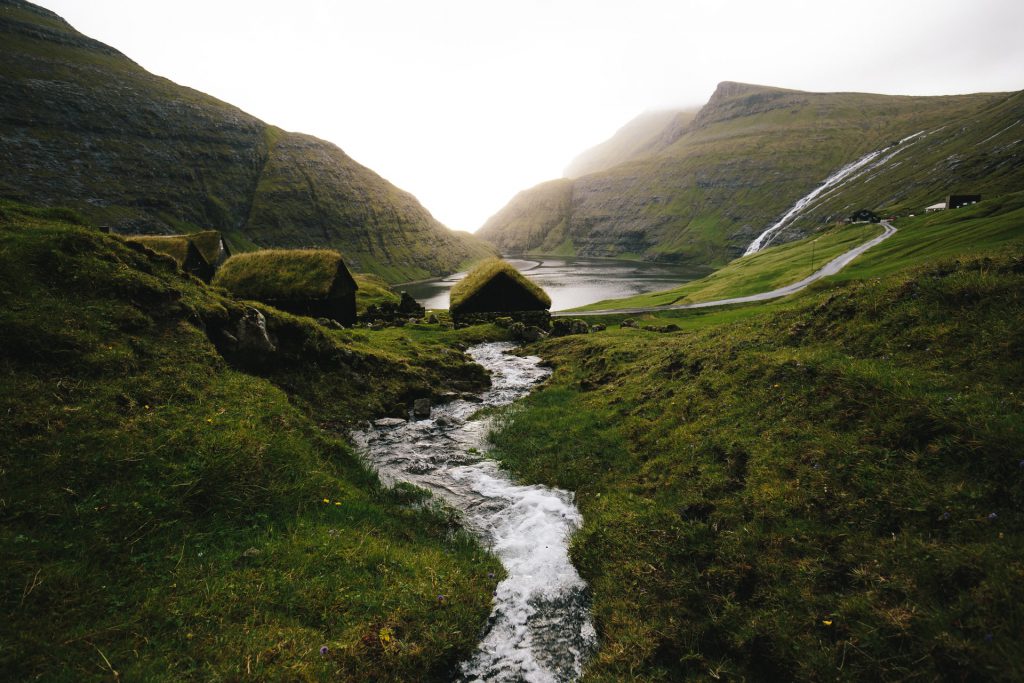
The climate of the Faroe Islands
The Faroe Islands are a north Atlantic archipelago which contains a very rugged terrain that has a windy, wet, cloudy, and cool climate which is the reason why locals will jokingly warn you to “expect all four seasons in one day so if you don’t like the weather, wait five minutes”.
Throughout the year the average temperatures are above freezing because of the relatively warm and swift gulf stream. As a result – and in contrast to the northerly latitude – the summers normally hover around 12 °C, while the average temperatures in the winter are around 5 °C.
The best time to visit the Faroe Islands is by far during the summer when the days are long and the weather is most stable. It’s also not uncommon during the peak of summer to experience the midnight sun in the Faroe Islands. This is the phenomenon where the sun almost never sets, and can only happen in the extremes of the Northern and Southern hemisphere during the peak of summer in that hemisphere.
For the adventurous types who are looking to chase the midnight sun on the Faroe Islands: On June 21, typically the longest day of the year, both locals and tourists climb the Slættaratindur mountain to experience and celebrate the midnight sun.
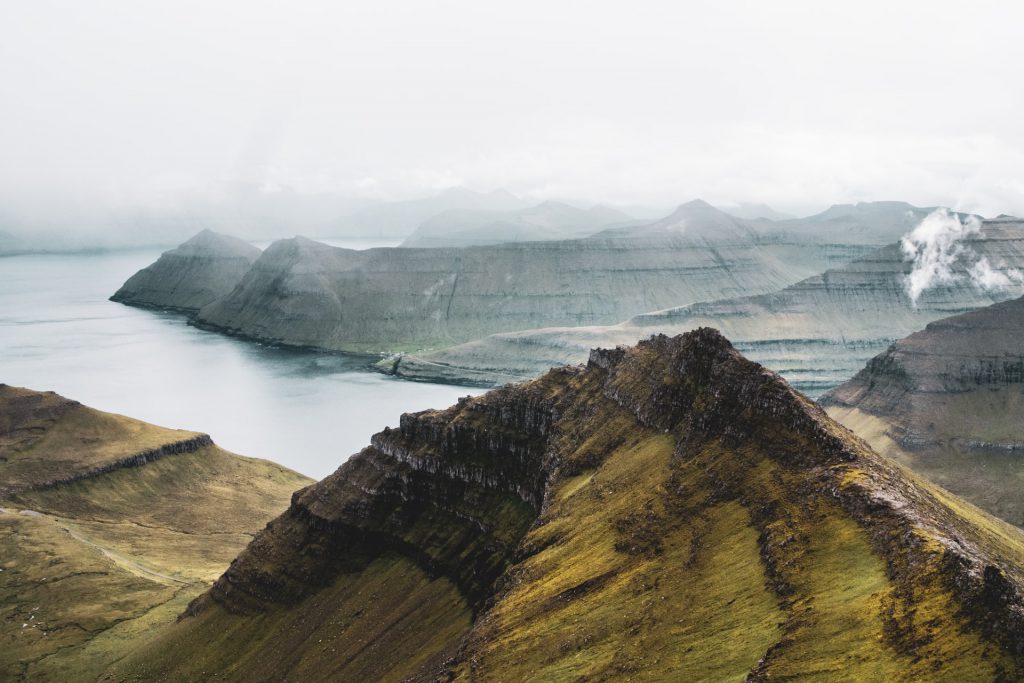
Flying to the Faroe Islands
On the island of Vágar you’ll find the only airport in the Faroe Islands, which is located 2 kilometer of the village of Sørvágur. The airport has connections to Copenhagen, Edinburgh, Paris (Charles de Gaulle), Reykjavík (Keflavík), and others.
For the people who plan on flying in: due to the Faroe Islands’ status as a self-governing territory, the airport is not subject to the rules of the European Union.
Money in the Faroe Islands
Two currencies with the same values are used interchangeably in the Faroe Islands: the Faroese króna and the Danish krone. This is because the Faroese government prints its own bank notes, but uses Danish coins.
Most cities around the capital accept credit cards, but it can be useful to have cash with you when visiting the remote islands.
What are the Faroe Islands known for?
Although the Faroe Islands doesn’t have the largest area of land, they still have plenty of sights that make them unique.
Whaling still occurs
Hunting on whales has been around in the Faroe Islands since the time the first the Norsemen settled (9th century) While many animal rights groups correctly criticize whaling to be cruel and unnecessary, it still occurs in various villages to this day. Many Faroese consider it to be an important part of their food culture and history. In a recent interview, a government spokesperson said it may be a ‘dramatic sight’ for outsiders but whale meat and blubber is a ‘valued part of the national diet in the Faroe Islands’.
Whaling is a community activity on the islands, in which the Faroese would first surround the whales in a wide semicircle of boats. Then the boats would drive the whales into a bay or to the bottom of a fjord.
Every summer, around 800 pilot whales are massacred in bays across the remote islands as inhabitants prepare for the harsh winter months ahead.
Magical landscapes
Spread over eighteen different islands in the Faroe Islands, you’ll be able to find all sorts of jaw-dropping scenery and landscapes. With a trivial amount of people living on the Islands, the amount of intact viking graves and untouched landscapes created by volcanoes are crazy!
Faroese puffins
The Faroese Puffin is a seabird which breeds in the islands in large numbers, and has been harvested by the locals for at least 300 years, forming a very important (historically) component of the Faroese diet.
Fun fact, there are almost around 10 times as many puffins on the Islands as there are humans!
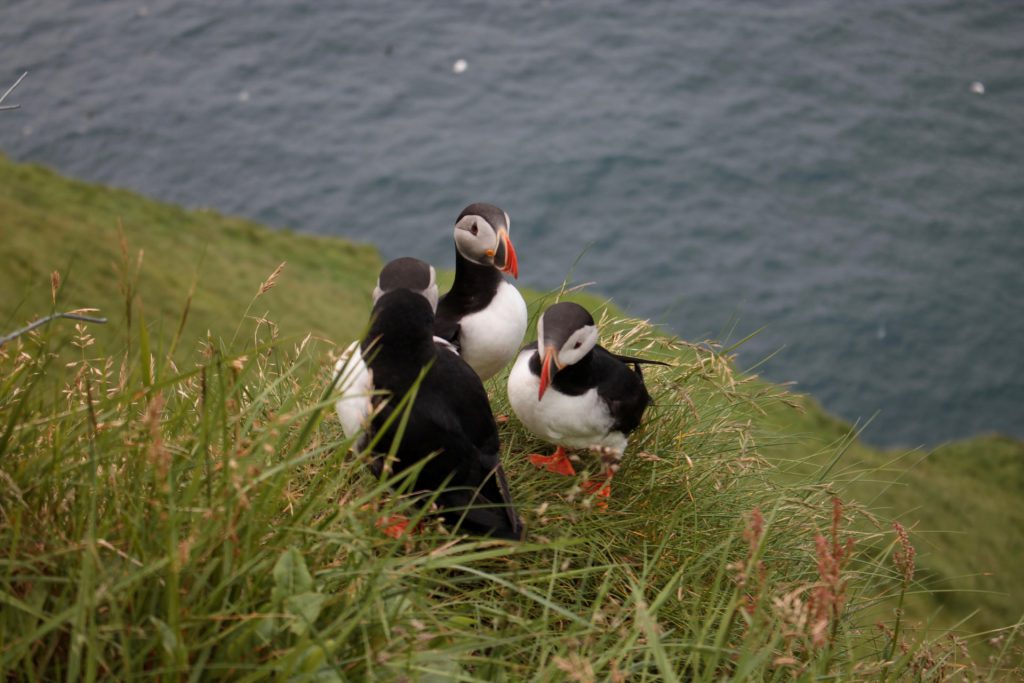
Faroe Islands Premier League
The Faroe Islands have their own football league called the Premier League (not to be confused with the UK’s Premier League), which consists of 10 teams who play each other three times each season. Every year, a draw is made before the scheduling of the next season’s games to decide which teams will have an additional home game.
The winners of the Faroese champion qualify to the UEFA Champions League first qualifying round, while the second and third placed teams enter the UEFA Europa League at the Preliminary round.
The most known player in the Faroese premier League is Gunnar Nielsen, who currently plays as a goalkeeper for Icelandic club FH. Nielsen has also represented some bigger teams, like the Blackburn Rovers and Manchester City.
Gunnar Nielsen is also the current goalkeeper of the Faroe Islands national football team, which has been a member of FIFA since 1988. Since then, their biggest victories were the double win against Greece during the UEFA Euro 2016 qualifications.
Since 2017, the Faroese national team consists of twelve full-time professionals playing in the Norwegian, Danish and Icelandic leagues.
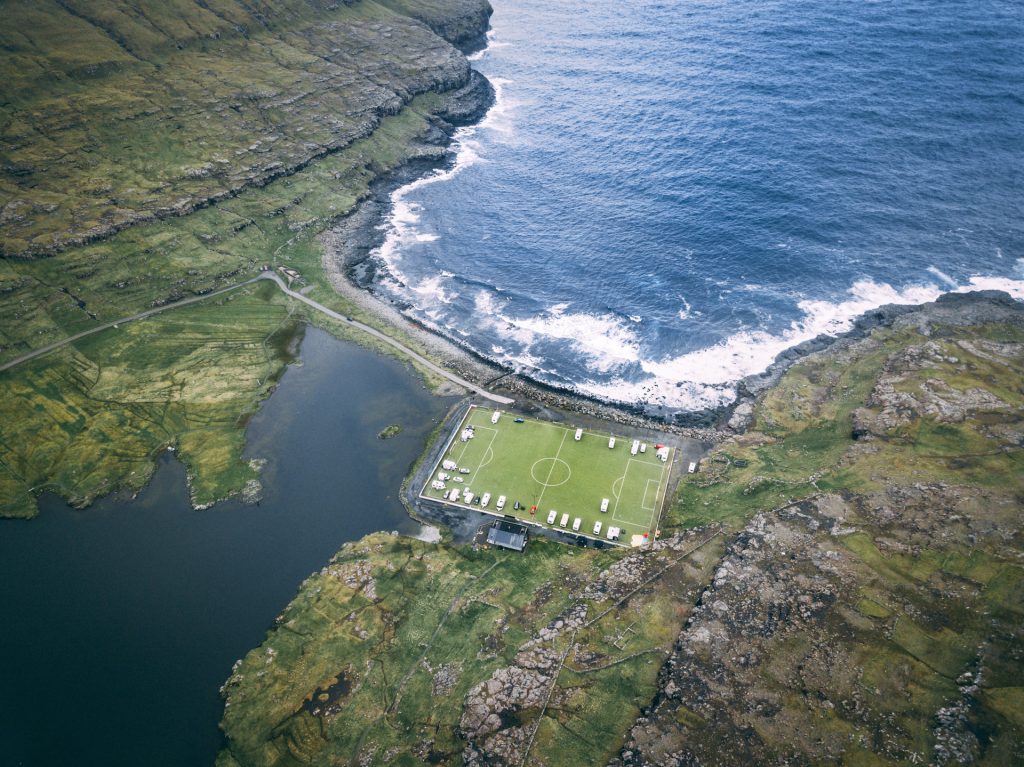
Most Nobel laureates per capita
Despite only having one laureate (Niels Ryberg Finsen), the Faroe Islands currently have the most Nobel laureates per capita worldwide.
Niels Ryberg Finsen was a physician and scientist, which was awarded the Nobel Prize in Medicine and Physiology in 1903 for “his contribution to the treatment of diseases, especially lupus vulgaris, with concentrated light radiation, whereby he has opened a new avenue for medical science.”
Sustainable electricity
The Faroe Islands is one of the world’s leading nations in producing sustainable electricity. Their aim is that the nation’s electricity will be sourced solely from renewable energy by 2030, which shouldn’t be too hard since it’s surrounded by favourable conditions.
Currently over 50% of their energy is generated by renewable energy in the form of hydro, wind, tides and waves, and to a certain extent solar energy.


